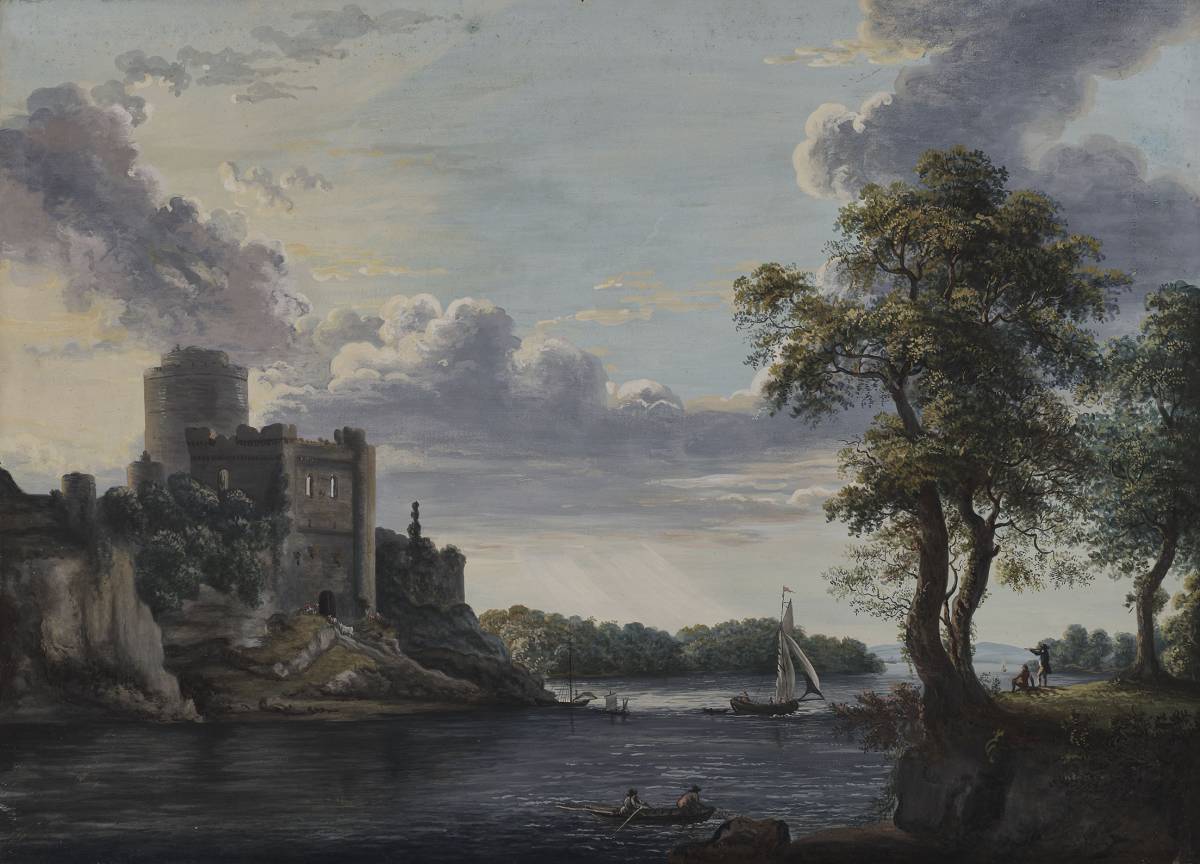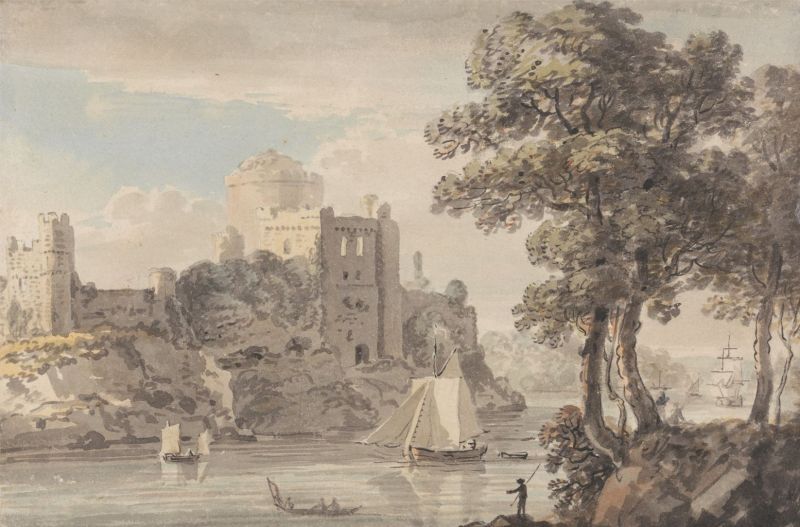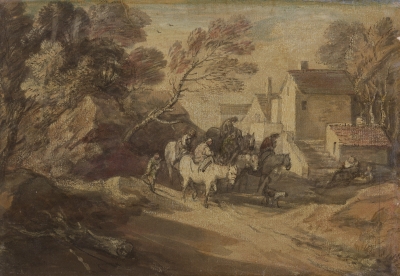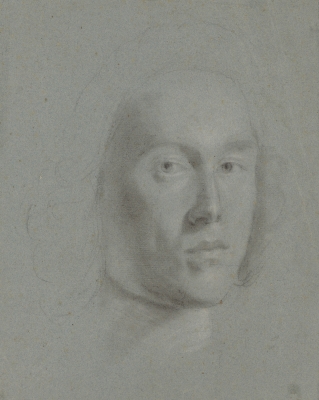This dramatic view of Pembroke Castle was made by Paul Sandby shortly after accompanying the great naturalist Sir Joseph Banks and his party on a trip to South Wales. Despite Sandby’s importance in promoting both picturesque views of the Welsh landscape and its romantic ruins, he only made three trips to the country. The last of these was in the company of Banks and his colleagues the naturalists Daniel Solander and John Lightfoot, the party explored an itinerary of sites of personal, familial interest as well as of botanical, historical and commercial curiosity. They travelled to the Carmarthenshire estate of Edwinsford, near Tally on the River Cothy, belonging to Banks’s uncle, Robert Bankes-Hodgkinson and from their ranged west into Pembrokeshire stopping at the historic town of Pembroke. Sandby used the sketches he made on this trip to prepare a sequence of twelve watery aquatints principally depicting antiquarian remains as well as a series of watercolours and exhibition works. This ambitious exhibition piece made in gouache is one of Sandby’s grandest Welsh views, executed on an impressive scale and preserved in outstanding condition, it is on the market for the first time in sixty years.
Paul Sandby’s elder brother, Thomas, began his life as a military draughtsman in the Ordnance office in the Tower of London. It seems likely that Paul learnt his early skills as a draughtsman and watercolour artist from his elder brother. In 1747 the brothers were employed as part of the military survey of Scotland, commissioned following the Jacobite Rising. Sandby’s early training was therefore rooted in the accurate recording of views for practical purposes. Around 1764 Thomas Gainsborough wrote to a patron declining to paint ‘real views from Nature in this Country’, but praised Paul Sandby as ‘the only Man of Genius… who has employ’d his Pencil that Way.’[1] Gainsborough’s comment was something of a backhanded compliment, but it is evident that he respected his fellow Royal Academician’s ability as a landscape artist.
It was in the 1760s that Sandby established himself as a landscape painter of distinction in London. His reputation seems to have been founded particularly on the remarkable group of drawings Sandby made in and around Windsor. His connection to Windsor was through his elder brother, Thomas, whom the Duke of Cumberland, then Ranger of Windsor Great Park, had employed as draftsman from the 1750s. Thomas’s residence in Windsor made Paul a regular visitor, especially after Thomas was appointed Deputy Ranger in 1765. Many of Paul’s most spectacular drawings were panoramic, in which he combines a delicacy of colour and meticulous detail to provide information and telling records of the scenes he is depicting. As his son noted: ‘he aimed at giving his drawings the appearance of nature as seen in a camera obscura with truth in the reflected lights, clearness in shadows and aerial tint and keeping in the distance and skies.’[2] Sandby transformed these topographical views into more complex landscapes filled with human incident and social commentary.
The present grand sheet is an unusually ambitious work prepared for exhibition. Sandby has used approximately the same composition as his plate of Pembroke Castle published in aquatint in 1775 as part of his XII Views in South-Wales, cropping the image by cutting off a section of the castle walls and focusing instead on the channel between the keep and opposite bank. Notably Sandby transposes the summer scene of his published aquatint to an early autumnal day in the finished painting. The tree at the heart of the composition is beginning to lose its leaves and the exquisitely rendered sky suggests a stiffening breeze. Sandby populates the landscape with a similar series of vessels and figures, notably the figures in the foreground, one of whom is shown making observations through a telescope. Sandby regularly includes figures using optical devices, particularly telescopes. In the context of Sandby’s first visit to Pembroke Castle in the company of Bankes, Solander and Lightfoot it situates this image at the centre of a rich culture of enlightenment observation.
Sandby was a founder member of the Royal Academy and exhibited regularly at the Academy’s annual exhibition. In the catalogues he makes a distinction between ‘water colours’ and a ‘stained drawing’, the former included works in gouache and the latter appear to have been handled in pure watercolour. Preserved in exceptional condition, this is an important newly discovered work by Paul Sandby.

Paul Sandby
Pembroke Castle
Etching
9 ⅜ x 12 ⅜ inches; 238 x 314 mm
1775
© The Trustees of the British Museum



